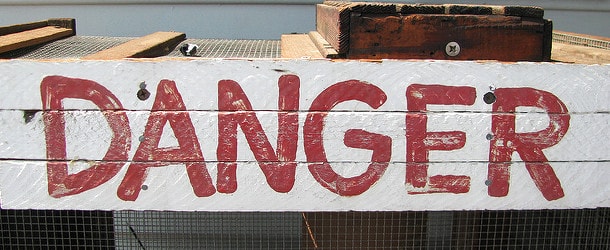The Hidden Danger of a Higher Mortgage Rate

Everyone knows mortgage rates aren’t as low as they used to be.
Understatement of the decade there. But this doesn’t just equate to a higher monthly payment.
There are other negatives associated with a higher mortgage rate, some which may be overlooked.
Today, I want to talk about loan amortization and how it differs between low and high mortgage rates.
With the 30-year fixed closer to 7% these days, it’s going to take a lot longer to pay down your principal balance. And that could have unintended consequences.
Higher Mortgage Rate = Slower Paydown
As noted, mortgage rates are no longer a screaming bargain. In fact, they’re historically kind of high now, at least if you consider the last couple decades.
At last glance, the popular 30-year fixed mortgage averaged 6.81%, according to the latest weekly survey from Freddie Mac.
For some borrowers, a rate in the 7s isn’t out of the question, depending on down payment, FICO score, and other pricing adjustments.
A little more than a year ago, you could get a 30-year fixed closer to 3.5%. And despite this rate jump, home prices haven’t budged in most places.
In fact, they’ve reached new heights nationally, defying affordability constraints and the many Fed rate hikes that have taken place since.
Unfortunately, this means today’s home buyers are facing significantly higher mortgage payments.
But beyond that, they’re also facing much slower paydowns. Simply put, the higher your interest rate, the longer it takes to pay down principal.
This means more of each payment goes toward interest instead of principal, especially in the early years of the loan.
A 7% Mortgage Rate vs. a 3.5% Mortgage Rate
| $500,000 loan amount |
3.5% rate |
7% rate |
| Monthly Payment | $2,245.22 | $3,326.51 |
| Payment Difference | +$1,081.29 | |
| Month 1 interest | $1,458.33 | $2,916.67 |
| Month 1 principal | $786.89 | $409.84 |
| Balance after 3 years | $470,177.21 | $483,634.91 |
| Balance after 5 years | $448,485.61 | $470,658.16 |
| Home equity difference | +$22,172.55 |
Let’s look at an example to illustrate, using a $500,000 loan amount and a 30-year fixed-rate mortgage.
On the 7% mortgage, the monthly payment would be $3,326.51. On a comparable home loan with a 3.5% mortgage rate, the payment would be $2,245.22.
So right off the bat, we’re talking a difference of $1,081 per month. That’s the obvious downside.
But wait, there’s more. Because of the much higher mortgage rate, the composition of each mortgage payment changes too.
There is an interest portion and a principal portion. In month one on the 3.5% mortgage, you’d pay $1,458.33 in interest and $786.89 in principal.
The principal is what you borrowed, so knocking that out means you’re actually making a dent in the loan balance.
The interest is simply the cost of borrowing the money in the first place, and does nothing to lower your loan balance (see interest-only loan for more on that).
After three years, you’d whittle the $500,000 balance down to about $470,000. Not bad, especially if home prices increase during that time.
But what about the 7% mortgage? Well, that’s a different story. Your first payment would be $2,916.67 in interest, and just $409.84 in principal.
As you can see, a much larger portion of the monthly payment goes toward interest, simply because the interest rate is higher.
This means after three years, the principal balance would only be paid down to roughly $484,000.
So not only are you paying more each month, you’ve made less of a dent in your outstanding balance. Double whammy.
Now imagine if home prices went down ~8% from when you purchased, and your home’s appraised value is $483,000.
You’ve now got an underwater mortgage on your hands, meaning the loan balance exceeds the property value.
Aside from not having any home equity, you could be a predicament if you want to sell the property or refinance the mortgage.
How to Offset the Higher Interest Expense of a 7% Mortgage Rate
Now the example above is just a hypothetical. Home prices are expected to keep rising, so hopefully such a scenario doesn’t play out.
But it could, depending on where you’re located in the country, as some cities may boom while others bust.
Either way, there is a simple way to offset the higher interest expense tied to a higher-rate mortgage.
Simply pay extra. This could mean paying more each month, doing biweekly mortgage payments, or applying a lump sum to the mortgage.
Doing so will lower your interest expense and make the higher mortgage rate less painful. Just note that it won’t lower subsequent payments.
For example, paying an extra $200 per month would reduce the loan balance to about $475,650 after three years.
Not only would you reduce the impact of the high mortgage rate, but you’d have more equity to call your own.
And if and when a refinance opportunity came along, you’d ideally qualify at a lower loan-to-value (LTV) ratio, potentially snagging a lower mortgage rate in the process.
Comments are closed.